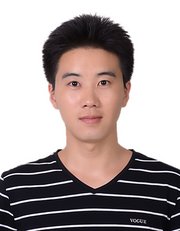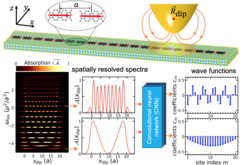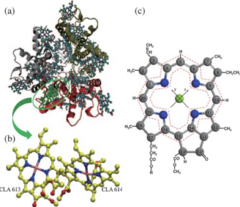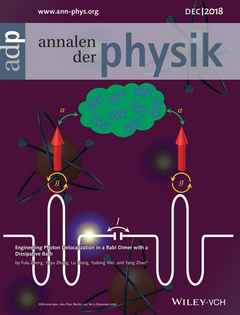Dr. Fulu Zheng

Fields of interest | Energy and charge transfer in molecular aggregates Application of machine learning in physics of open quantum systems Dynamical behavior in open quantum systems |
| Publications | Google Scholar |
Research
The research mainly focuses on theoretical investigations of optical properties and dynamical behaviors in photosynthetic systems and molecular aggregates by employing various approaches, such as the fully quantum mechanical modeling, the mixed quantum-classical method, and the combined QM/MM approaches. I am also interested in the light-matter interactions in QED systems and the applications of machine learning techniques in solving physical problems of open quantum systems.
Excitonic wave function reconstruction from near-field spectra using machine learning techniques

Eigenstate wave functions are vitally important to understand the static and dynamic properties of a quantum system as all the system’s information is contained in these states and the corresponding eigenenergies. A general problem in quantum mechanics is the reconstruction of eigenstate wave functions from measured data. For theory and experiments, nevertheless, it is nontrivial to resolve the eigenstate wavefunctions for most quantum systems. Self-assembled molecular aggregates on dielectric surfaces are promising candidates for optoelectronic devices. Strong interactions between the transition dipoles of the molecules lead to delocalized excitonic eigenstates where an electronic excitation is coherently shared by many molecules. Here we show that from spatially resolved near field spectra it is possible to reconstruct the underlying delocalized aggregate eigenfunctions. Although this high-dimensional nonlinear problem defies standard numerical or analytical approaches, we have found that it can be solved using a convolutional neural network. For both one-dimensional and two-dimensional aggregates we find that the reconstruction is robust to various types of disorder and noise. The methodology can be easily applied to more complicated cases, promoting information extraction from experimental data in a wide variaty of applications.
Engineering photon delocalization in a Rabi dimer with a dissipative bath
In circuit quantum electrodynamics (QED) systems, superconducting qubits are strongly coupled with microwave photons in resonators or transmission lines. Circuit QED architectures have been designed and fabricated as research platforms in quantum computation and quantum information. Due to high flexibility and tunability, circuit QED devices offer the possibility to simulate light-matter interactions in quantum systems with an integrated circuit. Recently a hybrid QED device consisting of two coupled cavities with each containing a single qubit has been proposed and fabricated to explore the dynamical quantum phase transitions of the photons in the device. In order to study the environmental effects on the dynamics of the qubits and the photons, a Rabi dimer is used to model this QED system with the qubits coupled to a collection of micromechanical resonators. The dynamical behavior of the composite system is studied by the Dirac–Frenkel time‐dependent variational principle combined with the multiple Davydov D2 ansätze. It is found that the photon dynamics in a Rabi dimer can be controlled by manipulating the qubit states via tuning the qubit-bath coupling. Two kinds of photon delocalization can be achieved by tuning the qubit-bath interaction amplitudes. These intriguing features are attributed to the environmental effects in the strong qubit-photon coupling regime. It is expected that the hybrid QED device proposed in here can be fabricated in future experiments, which will provide a platform for the studies of quantum physics.
Photoinduced Intra- and Intermolecular Energy Transfer in Chlorophyll a Dimer

Tasked to harvest solar photons and transform them into chemical energy with extremely high efficiency, photosynthesis is an essential biological process on the Earth. In natural photosynthetic systems, photons are absorbed by the light-harvesting complexes and excitation energy is then transferred to reaction centers where charge separation occurs. A better understanding of the efficient energy transfer process also benefits the design of high fidelity artificial photosynthetic systems with superior robustness and efficiency. A pigment dimer is an ideal model to study the intra- and intermolecular energy transfer simultaneously. A mixed quantum-classical method, nonadiabatic excited-state molecular dynamics is applied to investigate photoinduced intra- and inter-chromophore energy transfer in a Chla dimer. Energy relaxation pathways in the Chla dimer are revealed via analyzing the electronic transition density dynamics. It is found that the energy relaxation in the Chla dimer is faster than that in the Chla monomer, thanks to level splitting induced by intermolecular excitonic coupling.

